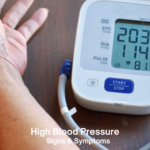Increased Breathing: Understanding the Causes, Effects, and Management
Breathing is a fundamental process essential for life, supplying our bodies with oxygen and removing carbon dioxide. Typically, the act of breathing is automatic and unnoticed, but there are instances when breathing patterns change, often resulting in increased breathing rates. Increased breathing, also known as hyperventilation, can be a normal physiological response or a sign of an underlying condition. This article explores the various aspects of increased breathing, including its causes, effects, and management.
Understanding Breathing and Its Regulation
The respiratory system is intricately designed to meet the oxygen demands of the body and maintain acid-base balance. The process of breathing is regulated by the respiratory center in the brainstem, which responds to changes in carbon dioxide, oxygen levels, and pH in the blood. Under normal circumstances, breathing rates range from 12 to 20 breaths per minute in adults. Increased breathing, or hyperventilation, occurs when the breathing rate exceeds this range.
Causes of Increased Breathing
1. Physical Exertion
One of the most common causes of increased breathing is physical exertion. During exercise or strenuous activities, the body’s demand for oxygen increases, and carbon dioxide production rises. The respiratory system compensates by increasing the breathing rate to meet these demands.
2. Anxiety and Panic Disorders
Psychological factors can also lead to increased breathing. Anxiety and panic disorders often trigger hyperventilation. During an anxiety or panic attack, the body’s fight-or-flight response is activated, leading to rapid breathing. This can create a cycle where hyperventilation exacerbates anxiety symptoms, creating a feedback loop.
3. Respiratory Conditions
Certain respiratory conditions, such as asthma, chronic obstructive pulmonary disease (COPD), and pulmonary embolism, can cause increased breathing. These conditions can impair the lungs’ ability to efficiently exchange gases, leading to an increased respiratory rate to compensate for reduced oxygen levels or increased carbon dioxide.
4. Metabolic Acidosis
Metabolic acidosis is a condition where there is an excess of acid in the body. This can occur due to conditions such as diabetic ketoacidosis, kidney failure, or severe infections. To counteract the acidosis, the body increases the breathing rate to expel more carbon dioxide, which is acidic, in an attempt to restore the acid-base balance.
5. High Altitude
At high altitudes, the air pressure is lower, resulting in reduced oxygen levels. To compensate, the body increases the breathing rate to take in more oxygen. This is a normal adaptive response to altitude changes.
Effects of Increased Breathing
While increased breathing is a compensatory mechanism, it can have several effects on the body, some of which can be detrimental if the hyperventilation is prolonged or severe.
1. Hypocapnia
Increased breathing can lead to hypocapnia, a condition characterized by reduced carbon dioxide levels in the blood. This can cause dizziness, lightheadedness, and tingling sensations in the extremities. Severe hypocapnia can lead to muscle cramps and spasms.
2. Respiratory Alkalosis
Respiratory alkalosis is a condition resulting from hyperventilation where the blood becomes too alkaline due to excessive carbon dioxide exhalation. Symptoms can include confusion, agitation, and in severe cases, loss of consciousness.
3. Reduced Oxygen Delivery
Ironically, while increased breathing is meant to improve oxygen delivery, excessive hyperventilation can reduce the efficiency of oxygen delivery to tissues. This occurs because low carbon dioxide levels cause blood vessels to constrict, reducing blood flow to vital organs, including the brain.
Management of Increased Breathing
Managing increased breathing involves addressing the underlying cause and employing techniques to normalize the breathing rate.
1. Breathing Techniques
For hyperventilation due to anxiety or panic attacks, specific breathing techniques can help. Slow, deep breathing can help restore normal breathing patterns. Techniques such as diaphragmatic breathing or using a paper bag to rebreathe carbon dioxide can be effective in managing acute hyperventilation episodes.
2. Treatment of Underlying Conditions
Addressing the root cause of increased breathing is crucial. For respiratory conditions like asthma or COPD, appropriate medications such as bronchodilators or corticosteroids can help. In cases of metabolic acidosis, treating the underlying condition, such as administering insulin for diabetic ketoacidosis, is essential.
3. Lifestyle Modifications
For individuals with anxiety-related hyperventilation, lifestyle modifications can be beneficial. Regular physical activity, stress management techniques such as yoga or meditation, and cognitive-behavioral therapy (CBT) can help manage anxiety and reduce hyperventilation episodes.
4. Medical Intervention
In severe cases where increased breathing is due to serious conditions like pulmonary embolism or heart failure, immediate medical intervention is necessary. This may involve hospitalization, oxygen therapy, and other medical treatments to stabilize the patient.
Preventive Measures
Preventing increased breathing involves maintaining overall health and addressing risk factors.
1. Regular Exercise
Regular exercise can improve respiratory efficiency and overall cardiovascular health, reducing the likelihood of hyperventilation during physical activities.
2. Stress Management
Effective stress management techniques can prevent anxiety-induced hyperventilation. Practices such as mindfulness, deep breathing exercises, and adequate sleep are crucial.
3. Health Monitoring
For individuals with chronic respiratory or metabolic conditions, regular health monitoring and adhering to treatment plans can prevent episodes of increased breathing.
Conclusion
Increased breathing, or hyperventilation, is a complex response that can arise from various causes ranging from physical exertion to psychological factors and underlying medical conditions. Understanding the causes and effects of increased breathing is essential for effective management. By employing appropriate breathing techniques, addressing underlying conditions, and adopting preventive measures, individuals can manage and prevent episodes of increased breathing, ensuring better overall health and wellbeing.





